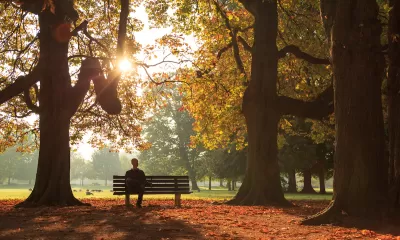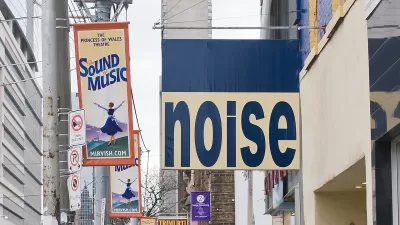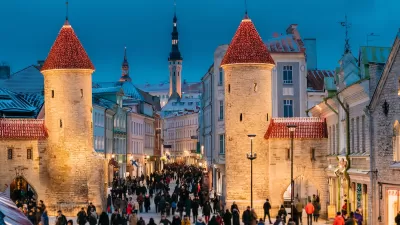Environmental noise can pose serious health risks ranging from sleep disruptions to higher blood pressure.

“In the world of occupational health, there’s long been awareness around the risk of noise-induced hearing loss, and today noise protection is a key part of workplace health and safety,” writes Emma Durand-Wood in a piece for Strong Towns.
But public health officials know less about “environmental noise,” the everyday sources of urban sound defined by the World Health Organization as “unwanted or harmful outdoor sound created by human activities, including noise from road, rail, airports and from industrial sites.”
More recently, research results have elevated noise pollution from a nuisance to a potentially severe health risk. “We now know that higher levels of environmental noise raise heart rate and blood pressure, cause harmful sleep interruptions, and are linked to cardiovascular disease, dementia, and cognitive impairment in children, among others.” In many U.S. cities, the racial and economic disparities that dictate where people live mean lower-income communities are often more exposed to excessive noise in addition to other harmful pollution.
Some urban noise is inevitable. But what can cities do to mitigate the damage and dampen unpleasant sounds? For one, they can plant more trees. “Adding trees or extra layers of vegetation alongside traditional noise barrier walls can significantly boost noise reduction.”
Durand-Wood also recommends permitting multifamily housing in more places—“Folks who prefer to or must live somewhere other than a single-family home shouldn’t be relegated to the noisiest areas, but in many places, multi-family housing is only being built along major corridors”—and reducing vehicle speeds and speed limits, which is shown to reduce the amount of associated road noise. Through relatively simple interventions, “Urban environments don’t need to be inherently noisy and harmful.”
FULL STORY: Why Are Cities So Noisy? And Can We Do Anything About It?

Planetizen Federal Action Tracker
A weekly monitor of how Trump’s orders and actions are impacting planners and planning in America.

Congressman Proposes Bill to Rename DC Metro “Trump Train”
The Make Autorail Great Again Act would withhold federal funding to the system until the Washington Metropolitan Area Transit Authority (WMATA), rebrands as the Washington Metropolitan Authority for Greater Access (WMAGA).

The Simple Legislative Tool Transforming Vacant Downtowns
In California, Michigan and Georgia, an easy win is bringing dollars — and delight — back to city centers.

The States Losing Rural Delivery Rooms at an Alarming Pace
In some states, as few as 9% of rural hospitals still deliver babies. As a result, rising pre-term births, no adequate pre-term care and harrowing close calls are a growing reality.

The Small South Asian Republic Going all in on EVs
Thanks to one simple policy change less than five years ago, 65% of new cars in this Himalayan country are now electric.

DC Backpedals on Bike Lane Protection, Swaps Barriers for Paint
Citing aesthetic concerns, the city is removing the concrete barriers and flexposts that once separated Arizona Avenue cyclists from motor vehicles.
Urban Design for Planners 1: Software Tools
This six-course series explores essential urban design concepts using open source software and equips planners with the tools they need to participate fully in the urban design process.
Planning for Universal Design
Learn the tools for implementing Universal Design in planning regulations.
Smith Gee Studio
City of Charlotte
City of Camden Redevelopment Agency
City of Astoria
Transportation Research & Education Center (TREC) at Portland State University
US High Speed Rail Association
City of Camden Redevelopment Agency
Municipality of Princeton (NJ)





























